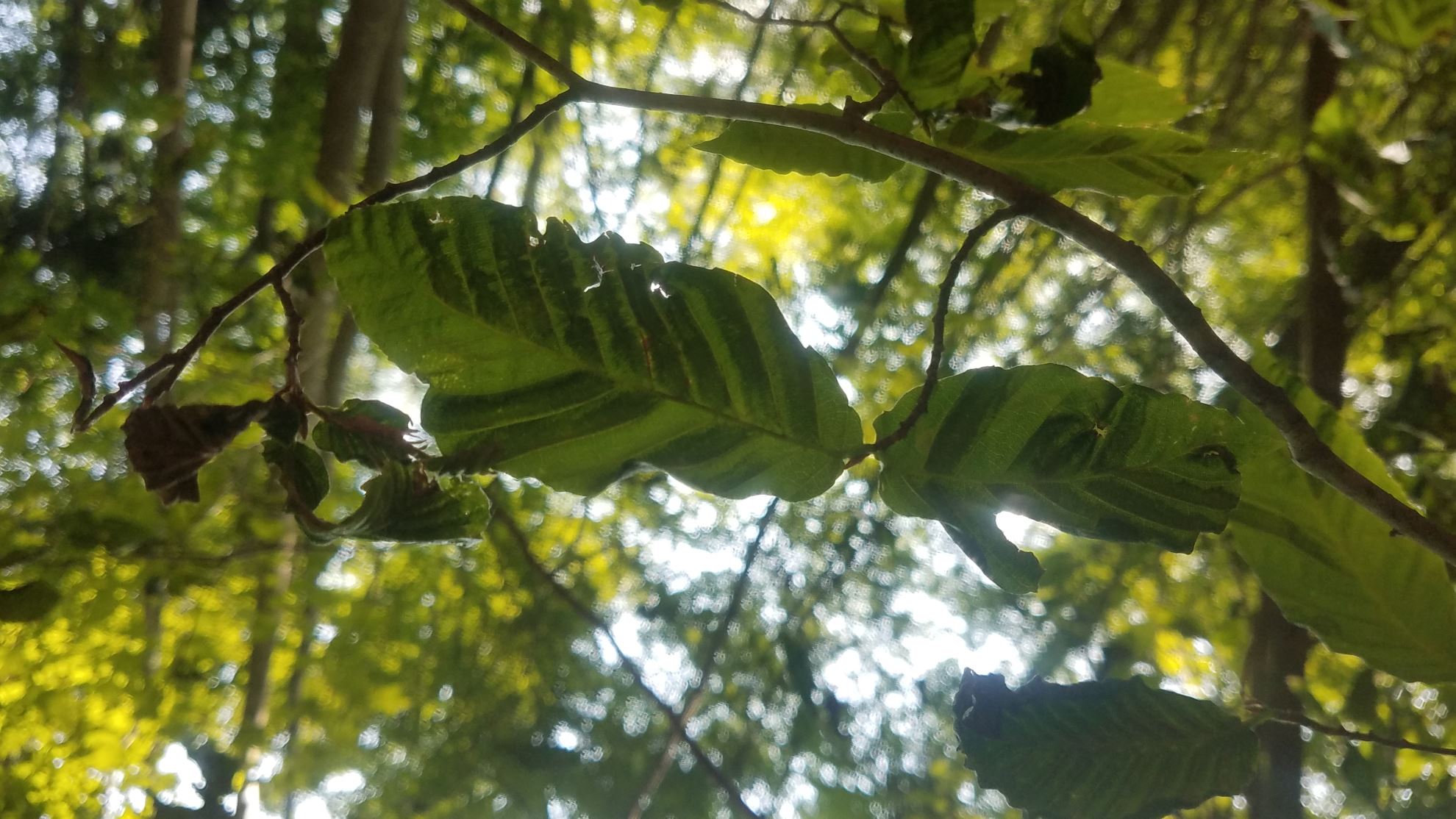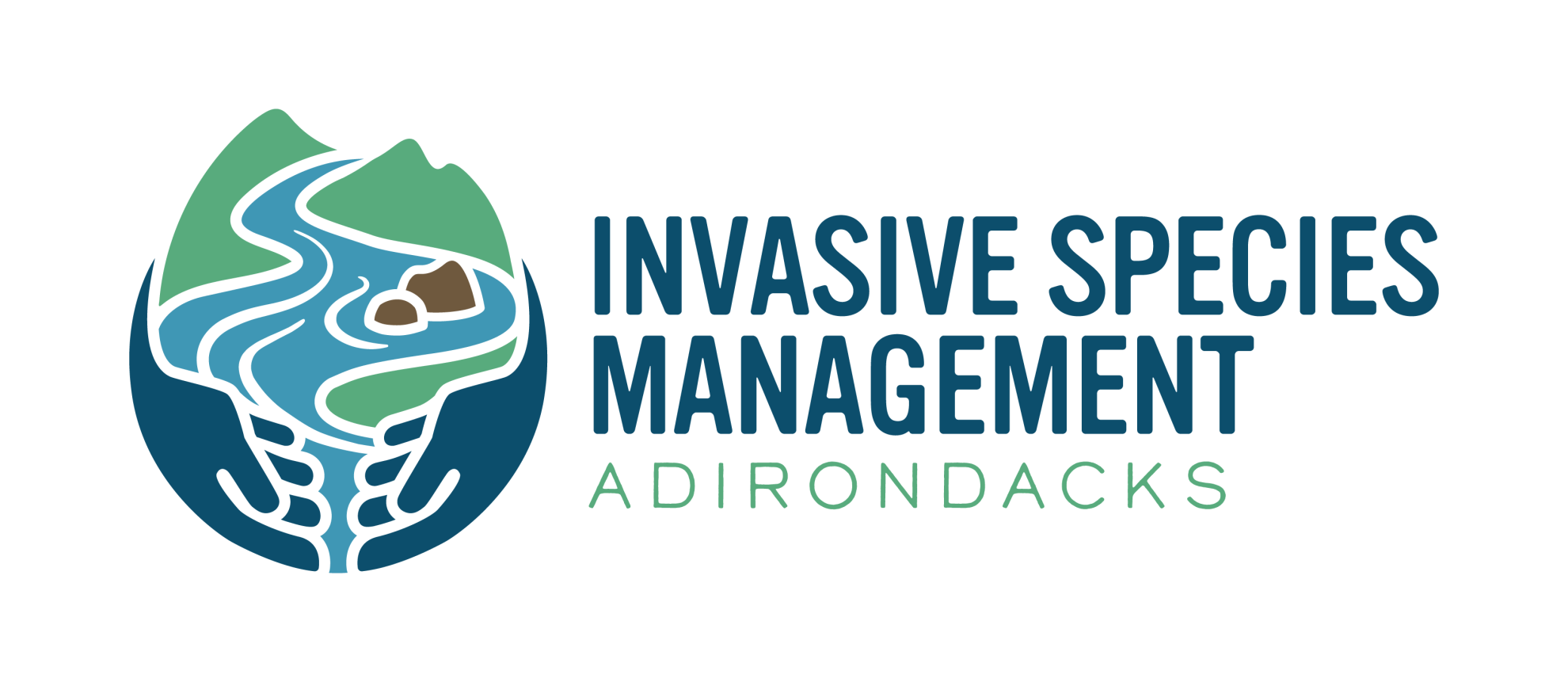Beech Leaf Disease and Wineberry Found in Adirondacks for First Time

Beech Leaf Disease and Wineberry Found in Adirondacks for First Time
Dear Partners,
I hope you had a wonderful 4th of July and got out on the water or into the woods. Last week was challenging for invasive species managers since beech leaf disease and wineberry (Rubus phoenicolasius) were both found for the first time in the Adirondacks, and it was nice to have a break. Japanese stiltgrass was also confirmed on some of the Lake George islands. This is the second time this highly invasive grass was identified in the Adirondacks. Our collective vigilance preventing the spread of invasive species and containing new infestations is more important than ever. Read more below about how you can help.
Lake Protectors Materials Available and Workshops July 9 and August 6
Help protect your local lake by looking for aquatic invasive species! This is an easy and fun way to give back to the lakes you love. To date, over 800 citizen scientists have surveyed over 400 lakes throughout the Adirondacks. Volunteers are asked to attend a virtual or in-person training and to commit to monitoring a lake of their choice one time between July and September. All of the information you need is posted on our website here. You can access the recorded training webinar here, or attend one of the two in-person trainings detailed below. If you have questions, please reach out to Brian Greene, APIPP’s Aquatic Invasive Species Coordinator (brian.greene@tnc.org).
July 9 In-Person Training: Wilmington Town Beach 9:00am–12:00pm
APIPP is teaming up with the Ausable River Association to offer an in-person Lake Protectors training at the Wilmington Town Beach. Participants will learn how to identify, survey, and record data about aquatic invasive species. During this event, there will also be an option to paddle on Lake Everest to learn how to apply the survey protocol and identify aquatic plants and animals while on the water. Participants are asked to bring their own boat to join this portion of the training. Register here for the July 9 training.
- 9:00am-10:00am: Aquatic Invasive Species Identification
- 10:00am-11:00am: Survey Methods
- 11:00am-12:00: Optional Paddle for Field Experience
August 5 In-Person Training: Sacandaga Park and River Walk, Speculator 1:00pm – 4:00pm
APIPP is joining with Hamilton County Soil and Water Conservation District (HCSWCD) to host a Lake Protectors training on August 6 in Speculator, NY, at the pavilion in Sacandaga Park and River Walk. This event is part of Adirondack Water Week, a week-long celebration of all our amazing water resources in the Adirondack Park.
At this training, participants will learn to identify, survey, and record data about aquatic invasive species so they can join the hundreds of other volunteers protecting our Adirondack lakes. During this event, there will be hands-on identification of invasive species and examples of plant collection with aquatic rakes. All registered participants who attend will get an aquatic rake to take with them, thanks to HCSWCD! To register click here.
- 1:00 - 2:00pm: Aquatic Invasive Species Identification
- 2:00 - 3:00pm: Survey Methods and Clean. Drain. Dry.
- 3:00 - 4:00pm: Plant Observations from Shoreline
Beech Leaf Disease Found in Adirondacks!
The NYS Department of Environmental Conservation confirmed the first infestation of beech leaf disease (BLD) in the Adirondack Park, in Herkimer County, in late June. The disease was only identified for the first time in 2012 (in Ohio) and much about it, including the full cause of it and how it spreads, is still unknown. We do know it affects and kills both native and ornamental beech tree species which is a cause for concern since beech trees are prevalent in Adirondack forests.
To learn more about BLD, DEC is currently collecting information on symptomatic beech across NY. To bolster that effort, APIPP is planning a September workshop on BLD and will be looking for volunteers to survey for this pathogen. We’ll have more information about a fall training later this summer. For now, see this NYSDEC fact sheet and enter any findings into iMapInvasives. Thank you!
Wineberry Found in Adirondacks!
Last week APIPP staff also found the first Adirondack occurrence of wineberry, a highly invasive plant, on Long Island campground in Lake George. Wineberry is a spiny shrub in the raspberry genus that was introduced to the United States during the 1800’s for its edible berries. Wineberry grows quickly and forms dense thickets that exclude or shade out native species. You can read more about it on our website here. If you see this species, please report it to iMapInvasives or to APIPP.
July 20: Identifying and Managing Backyard Invasives, Zoom Webinar, 10:00am — Pesticide Credits Available
Learn more about how you can help manage invasive species on your own property. Invasive species are an ever-growing threat to the Adirondacks, and many people are surprised to learn that invasive herbaceous plants, shrubs, and trees can often be found growing in their own backyards. Join APIPP on July 20 and learn how to identity several common terrestrial invasive plants, and then learn best practices for effectively managing those species on your property.
Attendees will gain the skills to carry out safe chemical and manual control of invasive species following the principles of integrated pest management (IPM). For those seeking pesticide credits, this webinar will offer 1.5 NYS pesticide credits in categories 2, 3a, 6a, and 9. Live participation in the webinar and successful completion of an online quiz are required to receive credits. To register, click here.
Adirondack Park Agency (APA) Accepting Public Comments on Invasive Species Management Guidelines through July 11
APA is accepting public comments on proposed changes to the “Inter-Agency Guidelines for Implementing Best Management Practices to Control Invasive Species on DEC-Administered Lands of the Adirondack Park” (Guidelines). The proposed revisions to the regulations recognize the serious impact invasive species have on native ecological communities in the Adirondack Park and the successful history of managing invasive species to restore natural communities. APIPP is restoring more than 200 small sites on NYSDEC-administered land, totaling approximately 11 acres.
APIPP supports revisions to the guidelines to replace a static best management practices (BMPs) approach, which was not reflective of rapidly changing science and conditions on the ground, to an approach that uses site-specific BMPs. APIPP also supports streamlining the application and review processes with a standard workplan option for terrestrial and aquatic invasive species control projects.
APA will accept comments through July 11, 2022. For more information, see the press release from APA.
Happy Summer!
Tammara

